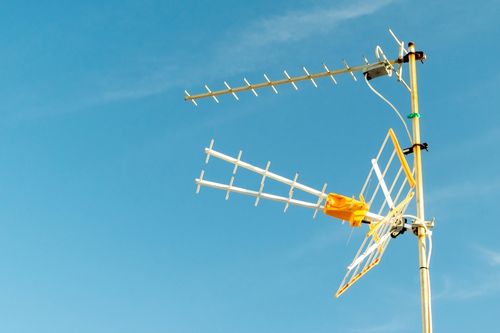Table of Contents
The weather impacts everyone and everything in its path, from the clothes you wear to work to the outdoor activities you participate in. The weather influences human, animal, and plant health, as well as the food supply, and contributes to your area’s average climate. Let’s find the intricate details through the study of weather.
What is the study of weather called?

The study of weather is known as meteorology. It is the study of the atmosphere, including weather and climate. Meteorology is concerned with the physical, dynamic, and chemical states of the Earth’s atmosphere (as well as those of the planets) and the interactions between the atmosphere and the underlying surface.
The term comes from the Greek word ‘meteoros,’ which means ‘lofty’ or ‘in the air,’ and logia, which means ‘to discuss, study, and explain.’
History
Aristotle, the Greek philosopher, is frequently cited as one of meteorology’s founders. His classic work Meteorologica (written in 350 BC) is widely known as one of the earliest efforts to comprehend the earth’s atmosphere and the water cycle.
Many weather proverbs and sayings that we use today are a form of conserving early observed meteorology. Expressions like ‘red sky at night shepherd’s delight’ were simply based on anecdotal experiences that a red sky in the evening was more often than not followed by good weather the next day, with no thought given to why.
Indeed, these expressions are frequently loose, but they are evidence of people throughout history observing and recording the skies, elements of which are still crucial in meteorology today.
In the 17th and 18th centuries, growing faith in the scientific method profoundly altered meteorology study. Evangelista Torricelli, an Italian physicist, discovered a link between changes in air pressure and weather changes. Torricelli invented the barometer in 1643 to accurately measure air pressure.
A group of Norwegian meteorologists created the concepts of air masses and fronts that are the foundation of modern weather forecasting in the 1920s. Using basic physics laws, these meteorologists discovered that massive cold and warm air masses move and collide in patterns at the heart of many weather systems.
Scales of meteorology
Weather occurs at various spatial and temporal scales. The four meteorological scales are as follows-
Microscale meteorology
Microscale meteorology concentrates on phenomena with short life spans and sizes ranging from a few centimeters to a few kilometers (less than a day). These phenomena impact tiny geographic areas and the temperatures and terrains within those areas.
Microscale meteorologists frequently investigate soil, vegetation, and surface water interactions near ground level. They measure heat, gas, and liquid transfer between these surfaces. Microscale meteorology involves the study of chemistry.
Mesoscale meteorology

Mesoscale phenomena range from a few kilometers to about 1,000 kilometers (620 miles). Mesoscale convective complexes (MCC) and mesoscale convective systems (MCS) are two critical phenomena (MCS). Convection, an important meteorological principle, causes both.
Convection is a circulation process. Warmer, less dense fluid ascends, while colder, thicker fluid descends. The ‘fluid’ refers to any substance that flows. Convection is the transfer of energy, heat, and moisture, which are the fundamental components of weather.
Synoptic scale meteorology
Synoptic-scale phenomena can span hundreds or even thousands of kilometers. Local weather forecasts show high and low-pressure systems on a synoptic scale. Pressure, like convection, is a fundamental meteorological principle at the heart of large-scale weather systems ranging from hurricanes to bitter chilly outbreaks.
Low-pressure systems form when the atmospheric pressure at the Earth’s surface is lower than the surrounding environment. Wind and moisture from high-pressure areas seek out low-pressure systems.
High-pressure systems form when the atmospheric pressure at the Earth’s surface is greater than the surrounding environment. This pressure tends to move downward vertically, allowing for dry air and clear skies.
Global scale meteorology
The transport of heat, wind, and moisture from the tropics to the poles is a global phenomenon. The large-scale air movement known as global atmospheric circulation, which aids in distributing thermal energy (heat) across the Earth’s surface, is a significant pattern.
The relatively constant movement of winds across the globe is known as global atmospheric circulation. Hadley cells dominate global atmospheric circulation. They are patterns of tropical and equatorial convection. Warm air rises in the atmosphere due to convection, while calm, dense air descends. Each loop represents a Hadley cell.
Meteorology today
Meteorologists have progressed from only being able to observe and record weather conditions at particular points on the earth’s surface to analyzing large-scale changes in weather systems worldwide. All thanks to advancements in communications and observing techniques such as satellite imagery and radar.
It has enabled us to significantly advance our understanding of the physical processes that define our weather. It has led us to develop various numerical models at the heart of our modern-day forecasts.
Meteorologists can tailor forecasts and weather warnings to the needs of the public by incorporating world-class models with a wealth of local and statistical knowledge and a vast observation network. They shoulder the responsibility to give people the correct information so there is no loss of time, money, or lives.
However, as we all know, the weather is always ambiguous. Modern meteorology is as much about understanding current conditions and how they might evolve as it is about making precise predictions. We may know that the sky is red in the morning due to an approaching frontal system. Still, the timings and locations of any heavier rain, the possibility of cloud breaks, and the exact temperatures this will bring are relatively uncertain.
Key takeaways
- The weather has an impact on everyone’s daily lives. From humans to plants, the effect of the climate is a reason of concern for all.
- Meteorology is a branch of science concerned with atmospheric processes and phenomena, particularly as a means of weather forecasting.
- Meteorology has four scales: microscale, mesoscale, synoptic, and global. Meteorologists frequently concentrate their efforts on a single scale.
Did you find this blog informative? If so, do express your thoughts in the comments below. Click here to contact us for more information on the study of weather. We would be happy to assist you with your queries.
Liked this blog? Read next: Study of rocks their types, applications, and much more.
FAQs
Q1. What are climatology and meteorology?
Answer- Climatology studies long-term atmospheric behavior over a long period, whereas meteorology studies atmospheric phenomena at any time and over short intervals of only a few days.
Q2. What are the five types of weather?
Answer- Sunny, cloudy, windy, rainy, and stormy are the five main types of weather.
Q3. What are examples of meteorology?
Answer- A hurricane or tornado is an example of a meteorological event. However, meteorology also investigates minor events such as the exchange of gases between plants and the atmosphere.







